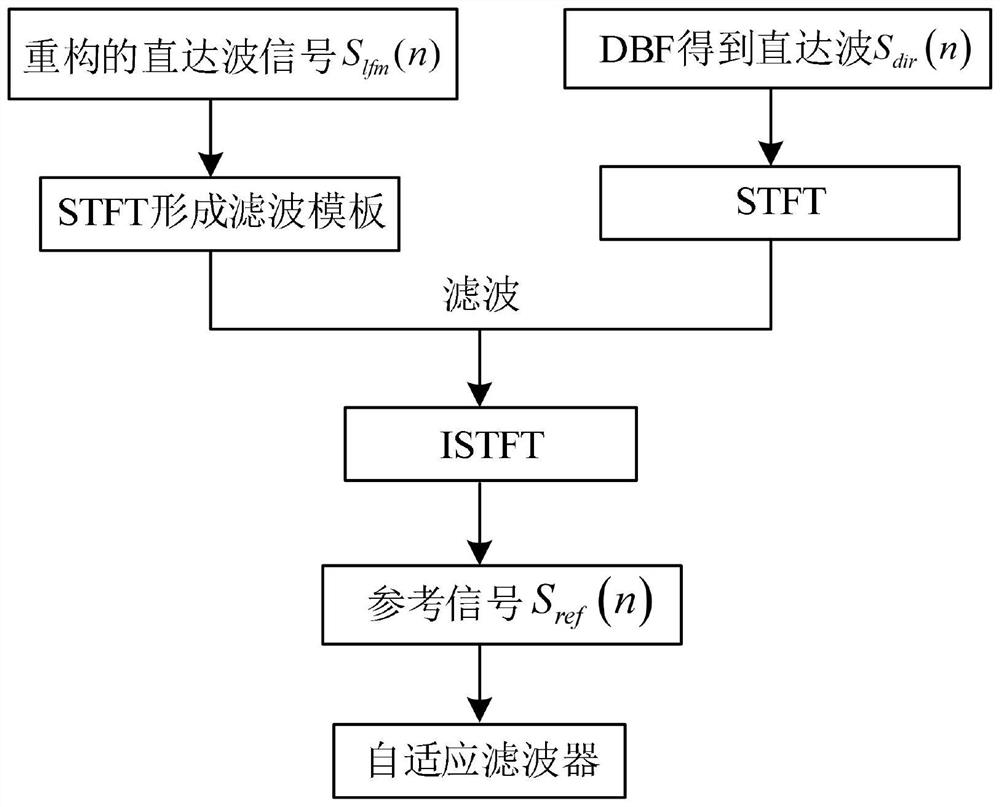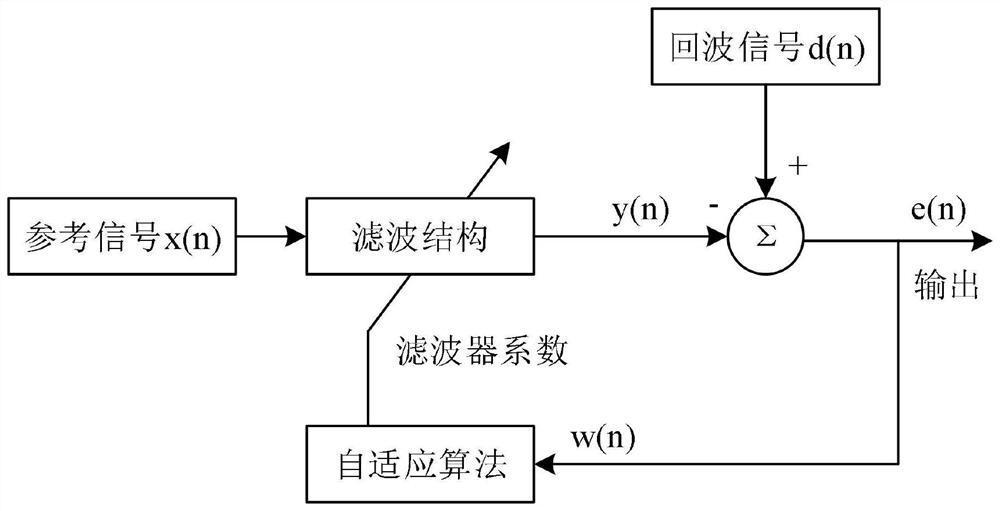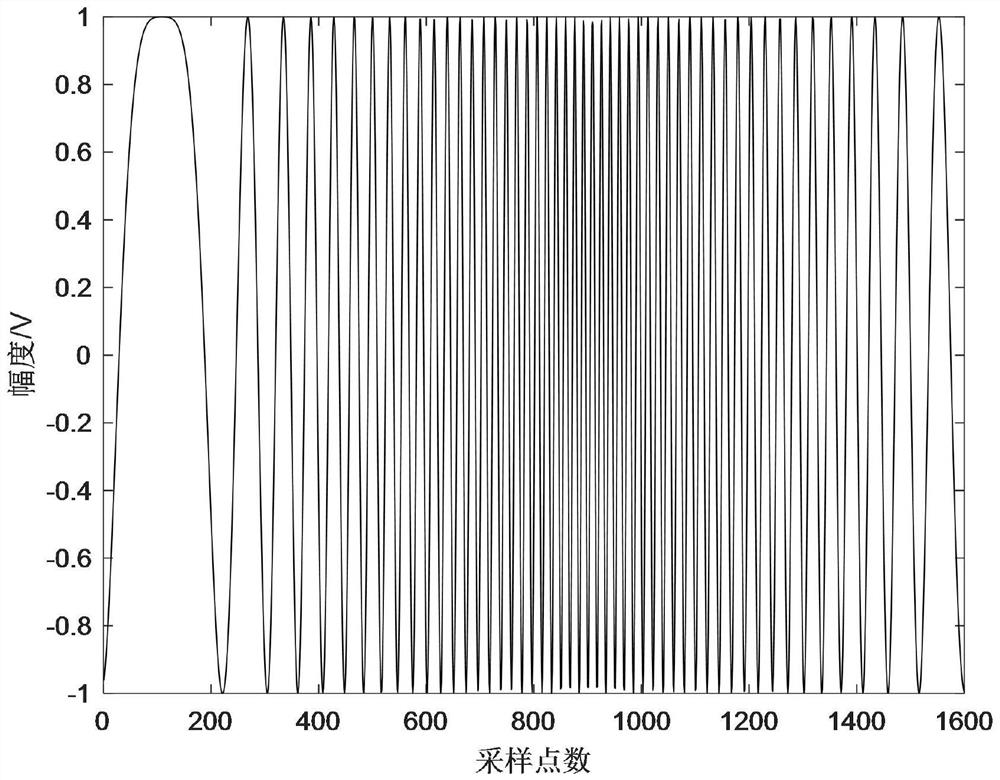Time domain direct wave suppression method for short-wave over-the-horizon radar with transmitting and receiving split
A technology of over-the-horizon radar, transceiver separation, applied in measurement devices, radio wave measurement systems, radio wave reflection/re-radiation and other directions, can solve problems such as poor direct wave suppression effect, improve the suppression effect, avoid the amplitude Noise and Phase Noise, Effects of Improved Suppression
- Summary
- Abstract
- Description
- Claims
- Application Information
AI Technical Summary
Problems solved by technology
Method used
Image
Examples
specific Embodiment approach 1
[0030] Specific implementation mode 1: In this implementation mode, a method for suppressing direct arrival waves in the time domain of a short-wave over-the-horizon radar with separate transceivers, the specific process is as follows:
[0031] Step 1: The radar transmits a signal, and the signal is received by the radar after being reflected by the target, and the received signal is an echo signal;
[0032] Step 2: Reconstruct the ideal reference signal;
[0033] Step 3: using DBF to extract the direct wave from the multi-channel echo signal;
[0034] Step 4: For the reconstructed ideal reference signal S obtained in Step 2 lfm (n) Perform short-time Fourier transform to form a filter template, and then the direct wave signal S obtained in step 3 dir (n) Carry out short-time Fourier transform (Short-time Fourier transform, STFT), use the filter template to filter, obtain the filtering result, and reconstruct the filtering result by short-time Fourier transform to obtain the...
specific Embodiment approach 2
[0041] Embodiment 2: The difference between this embodiment and Embodiment 1 is that the ideal reference signal is reconstructed in Step 2; the specific process is:
[0042] Step 21: generating an ideal LFM signal according to the signal parameters;
[0043] Step 22: Align the distance between the ideal LFM signal and the direct wave component in the echo signal, and perform Doppler alignment on the obtained distance alignment result to obtain the reconstructed ideal reference signal, denoted as S lfm (n).
[0044] Other steps and parameters are the same as those in Embodiment 1.
specific Embodiment approach 3
[0045] Specific embodiment three: the difference between this embodiment and specific embodiment one or two is that in the step two one, an ideal LFM signal is generated according to the signal parameters; the specific process is:
[0046] The complex expression of an ideal LFM signal in one cycle:
[0047] s(t)=Aexp[j(2πft+πkt 2 )], -T / 2≤t≤T / 2
[0048] In the formula, A represents the signal amplitude; f is the signal center frequency; k is the signal frequency modulation slope; T is the pulse repetition period; j is the imaginary number unit, j 2 =-1.
[0049] Other steps and parameters are the same as those in Embodiment 1 or Embodiment 2.
PUM
 Login to View More
Login to View More Abstract
Description
Claims
Application Information
 Login to View More
Login to View More - R&D
- Intellectual Property
- Life Sciences
- Materials
- Tech Scout
- Unparalleled Data Quality
- Higher Quality Content
- 60% Fewer Hallucinations
Browse by: Latest US Patents, China's latest patents, Technical Efficacy Thesaurus, Application Domain, Technology Topic, Popular Technical Reports.
© 2025 PatSnap. All rights reserved.Legal|Privacy policy|Modern Slavery Act Transparency Statement|Sitemap|About US| Contact US: help@patsnap.com



